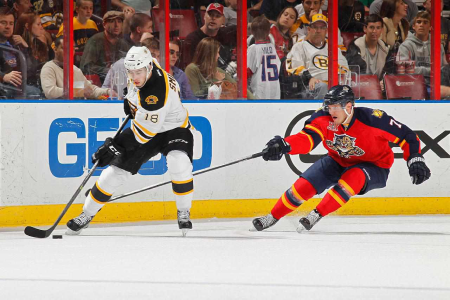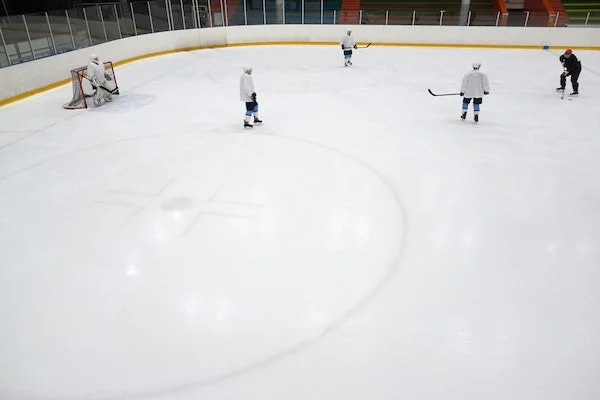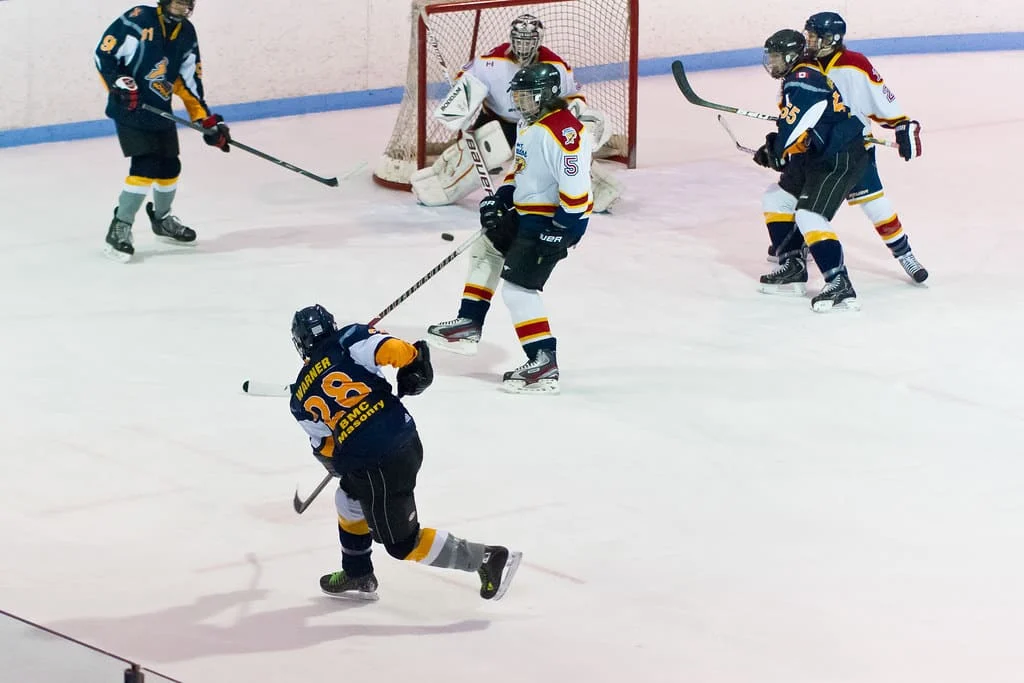If you’re new to hockey or just curious about the game’s nuances, you might have to heard the term power play in hockey but wondered exactly what it means. Simply put, a power play happens when one team has more players on the ice than the other due to a penalty. This gives the team with the advantage a better chance to score because the opposing team is shorthanded.
Understanding the dynamics of a power play is essential to appreciating hockey’s fast-paced, strategic gameplay. Let’s dive into the key details, including the power play time limit in hockey, how many players take part, the types of penalties that lead to a power play, the tactics teams use, and how teams score on a power play.

Content
What Causes a Power Play in Hockey?
A power play occurs when a player commits a penalty serious enough to send them off the ice temporarily. This penalty reduces their team’s number of active players. The most common reasons include tripping, hooking, slashing, or fighting, but there are several types of infractions that can lead to a team being shorthanded.
These penalties vary in length, but most power plays arise from two-minute minor penalties or more severe five-minute majors. The penalized player must remain in the penalty box for the duration of the penalty, giving the opposing team the numerical advantage — the essence of a power play in hockey.
How Many Players Are Involved During a Power Play?
A typical hockey team fields six players: five skaters plus one goalie. During a power play in hockey, the team benefiting from the penalty advantage usually has all six players on the ice, while the penalized team plays with fewer players.
The most common scenario is five skaters against four. However, in rare cases with multiple penalties, a team might play 5-on-3, creating an even greater disadvantage. So, how many players in a power play depends on the number of penalties but generally ranges from 4 to 6 skaters per side.
Understanding the Power Play Time Limit in Hockey
The power play time limit in hockey is tied directly to the penalty’s length. For minor penalties, the power play lasts for two minutes unless the team on the power play scores a goal, which ends the penalty early. For major penalties, like fighting, the penalized player remains off the ice for the full five minutes regardless of scoring.
This time pressure adds to the excitement and strategy of power plays. Teams on the power play want to maximize scoring opportunities quickly, while the shorthanded team strives to defend efficiently until the penalty expires.
Types of Penalties Leading to a Power Play

Not every penalty creates a power play situation, but most minor and major infractions do. Some of the common types of penalties leading to a power play include:
- Tripping: Using a stick or body to trip an opponent
- Hooking: Using the stick to impede an opponent’s movement
- Holding: Grabbing an opponent or their equipment
- Interference: Preventing a player without the puck from moving freely
- Slashing: Swinging the stick at an opponent aggressively
- Fighting: Engaging in a physical fight, leading to major penalties
Each of these can result in the offending player being sent to the penalty box, allowing the other team a power play.
Power Play Strategy in Hockey: How Teams Gain the Advantage
The key to a successful power play strategy in hockey lies in controlling the puck, creating space, and setting up quality shooting opportunities. Teams often use formations like the “umbrella” or “overload” to spread out defenders and create passing lanes.
A good power play requires:
- Quick puck movement to keep defenders off balance
- Accurate passing and shooting
- Players positioned to screen the goalie or capitalize on rebounds
- Communication and anticipation
Coaches and players spend hours perfecting these tactics because a well-executed power play strategy in hockey can turn the tide of a game.
How Teams Score on a Power Play
Scoring on a power play in hockey is all about exploiting the numerical advantage. The team with more players tries to outmaneuver the shorthanded defense. Common scoring methods include:
- One-timers: Quick shots taken immediately after a pass
- Screens: Positioning a player in front of the goalie to obstruct vision
- Rebounds: Following up on a saved shot before the goalie can recover
- Cross-ice passes: Spreading the defense wide to open shooting lanes
Because the defending team is down a player, they focus on blocking shots and clearing the puck to relieve pressure. Successfully scoring during a power play not only boosts the team’s score but often shifts momentum in their favor.
Why Power Plays Matter in Hockey

Power plays are a thrilling part of hockey that combine skill, strategy, and speed. They provide one team with an opportunity to capitalize on the other’s mistake, adding an extra layer of excitement for fans. Understanding how many players in a power play, the power play time limit in hockey, and the types of penalties leading to a power play deepens your appreciation of the game.
Teams invest heavily in developing a strong power play strategy in hockey because it can be a game-changer. Scoring during a power play often leads to momentum swings and can be a decisive factor in tight matches.
Conclusion
A power play in hockey is one of the most exciting and strategic elements of the game. It occurs when a team gains a numerical advantage due to the other team’s penalty, offering a critical chance to score. Knowing the power play time limit in hockey, understanding how many players in a power play, recognizing the types of penalties leading to a power play, and appreciating the nuances of power play strategy in hockey are essential for any hockey fan.
Get a clear breakdown of how many periods in hockey and what to expect in each one in our full guide here.
FAQ’s About Power Play in Hockey
Q1: How long does a power play last in hockey?
A power play usually lasts two minutes for minor penalties but can extend to five minutes for major penalties. The penalty ends early if the team on the power play scores during a minor penalty.
Q2: How many players are on the ice during a power play?
Typically, the team with the power play has five skaters plus a goalie, while the penalized team has one fewer skater, usually four, unless multiple penalties create a 5-on-3 situation.

Emily Harris is your ticket to the sports world. From thrilling competitions to heartwarming sportsmanship, she’s got you covered with her extensive sports insight.
